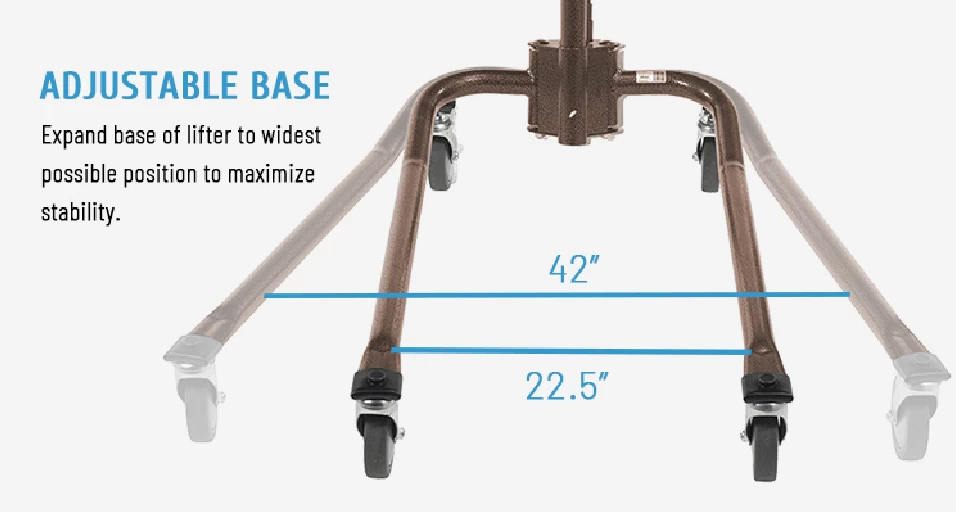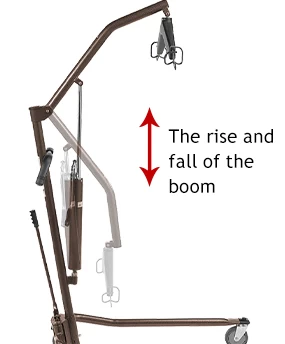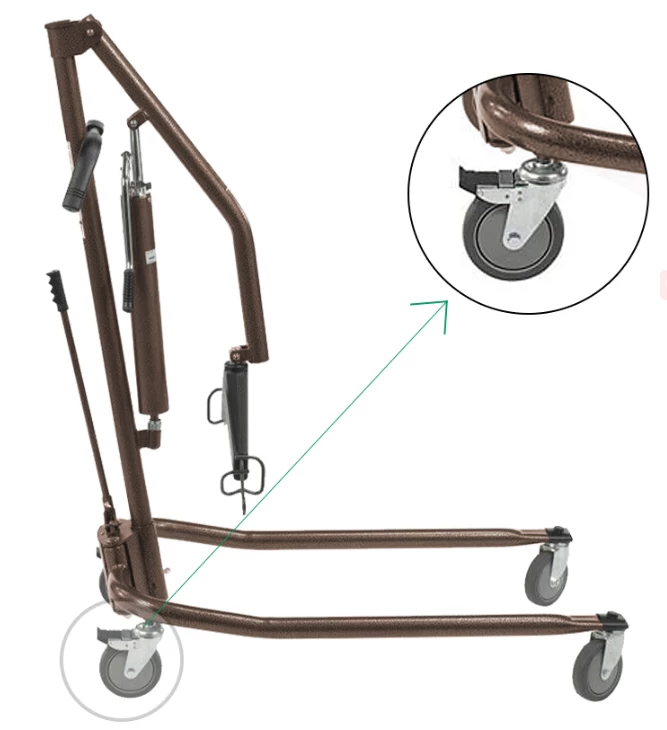- +86-138 4056 0445,+86-151 4027 2439
- info@careagemedical.com
Product Name: Hydraulic Patient Lift Product Model Number: 71910 Width: 590 mm Push Handle Height: 1140 mm Weight Limited: 150 kg
Product Name: Electric Patient Lift Product Model Number: 71970 Width: 590 mm Push Handle Height: 1140 mm Weight Limited: 150 kg
The electric patient lift which can easily move the patient up and down , saving effort and meeting the life needs of the patient. Transfers may be to and from beds, chairs, floor to bed, lateral transfers, bathing, and toileting , and offers a wide selection slings for a variety of lifting situations.
A patient lift is a device that helps caregivers at hospitals, nursing homes, and in private homes move those with limited mobility between beds and chairs or from a sitting position to a standing position. By giving a helping hand, patient lifts help reduce injuries to both patients and caregivers and provide smooth, comfortable transitions.
If you’re in the market for a patient lift for your facility or your home, this guide should help you choose the right one for your needs and the needs of person or people who trust you with their care.
Before you wade into the market for a patient lift you need four key pieces of information. After you answer these questions, you’ll have a better idea of what to look for and what to ask about as you search for a patient lift.
A manual patient lift relies on power supplied by the operator—usually through a hydraulic pump. An electric lift uses a motor, usually powered by a rechargeable battery. Manual lifts are usually less expensive because they require fewer parts; they have no electronics, motors, hand controls, control boxes, or batteries. On the other hand, although the hydraulic pumps are usually very easy to operate, they do require a little more effort than their electric counterparts.
Generally, hospitals and other facilities prefer the convenience of electric lifts, while manual lifts are a good choice for home settings. However, an electric lift may also be preferred in a homecare situation where there is only a single caregiver to operate it. With an electric lift, that caregiver can use one hand to operate the lift while the other steadies the patient.
Every lift has a maximum weight capacity. Make sure the one you choose can support as much weight as you need it to. If your patient has lost weight due to his or her condition, choose a lift that can support the patient’s previous weight. The patient may regain weight as he or she regains health.
This question is actually less important than it used to be. Hospital beds are much more adjustable now and most patient lifts are able to pick patients up from as low as the floor. It’s still important to confirm that the lift you choose can meet your height requirements, but most likely, it will.
For those who need to transport their patient lifts frequently, portable lifts are available that fold for transport or storage. Keep in mind that even portable lifts may be difficult to lift for a single person; most of them weigh at least 70 or 80 pounds. Although portable lifts can often be disassembled into smaller pieces, they are usually designed to be transported in a single folded piece.
Besides the choice of manual or electric, patient lifts can get a lot more specialized, depending on your needs. Here are four of the most common types of patient lifts for uses beyond the basic:
Heavy-duty lifts can lift up to 1,000 pounds. They usually have legs that can be adjusted into a wide position for greater stability, yet close easily to maneuver through hallways and doorways.
These lifts are specifically designed to get a patient on his or her feet from a sitting position. They should only be used for patients who can support most of their weight while standing and have control of their heads and upper bodies.
Bath lifts are usually made from rust-free aluminum and germ-resistant plastic so they can be used inside a bathtub to raise and lower patients in and out of the water. Some models recline for extra comfort.
Like bath lifts, pool lifts are designed to raise or lower patients in and out of water. They are usually used in pools (public or private) or hot tubs. Some models are deck-mounted, while others are portable and can be wheeled away for storage.
When you’re shopping for patient lifts online or in a store, you might encounter some confusing vocabulary. To help you make the right decision, here’s what those terms mean and why they matter.

The base of most patient lifts can be opened or closed by the use of a spreader bar (except for some models that offer a powered base). Opening and closing the base allows the lift to go around a standard wheelchair and through a standard doorway. Some models can open wider and close more narrowly than others, so make sure the base of the model you choose can be adjusted to fit your needs.

The boom is the curved piece at the top of a patient lift. The boom does a lot of the heavy lifting.

The casters are the wheels on which patient lifts roll. The usual options available are single or dual casters. You might find that dual casters work best on carpeted surfaces.
The cradle is the part of the patient lift that supports the sling (which supports the patient). There are two types of cradle: swingaway and elevating.
The mast is the vertical bar that fits into the base of the patient lift and attaches to the boom up top.
A spreader bar is used to open and close the base.
Choosing a patient lift goes hand in hand with choosing a sling. On a patient lift, the sling is the piece of (very strong) fabric that holds the weight of the patient as he or she is suspended in the air. Slings are usually made from woven nylon, cotton, or a similar material. It’s not too different from a modern hammock. Just as with patient lifts themselves, there is quite a wide variety among slings. Some are padded, for example. Others offer some type of knee support. Physical sizes and weight capacity also vary.
Here are a few of the most common type of sling used with patient lifts:
A full-body sling (or “hammock” sling) supports the patient’s entire body, with his or her arms inside the sling straps. Head support is optional. Full-body slings are a good choice for patients who are totally or partially dependent, can’t bear any weight, are very heavy, or have limited head control.
As its name implies, a u-sling is shaped like a “U.” These are secure, easy-to-fit general purpose slings that can be used for a wide variety of patients and purposes. They feature wide straps that loop around a patient’s thighs and legs for support. One of the nice things about u-slings is that you can take them off or put them on while the patient is seated.
Toileting slings are similar to full-body slings except they feature a hole in the bottom to allow the patient access to a toilet. These are special-use slings. We recommend you have a sling for toileting and a separate full-body sling for transfers.
| Size | Height | Weight |
| Small | 4’4” – 4’8” | 85 – 140 lbs. |
| Medium | 4’8” – 5’5” | 140 – 200 lbs. |
| Large | 5’5” – 5’9” | 200 – 350 lbs. |
| Extra Large | 5’9” – 6’2” | 350 – 500 lbs. |
Because so much depends on them, patient lifts are highly regulated. Every company selling patient lifts in North America must comply with strict quality control standards. All lifts must undergo government-approved testing for strength and durability and the results of those tests must be kept on file. For tracking purposes, each patient lift has a unique serial number. For the latest information on safety patients lifts, including recalls, visit the U.S. Food and Drug Administration (FDA) website at www.fda.gov.
There is always more to learn about patient lifts, but with this guide, you should have enough information to start searching and asking the right questions. At CareAge Medical, we offer the full range of patient lifts and—most importantly—we have a team of helpful experts ready to answer your questions and help match you up with a lift that fits your needs and budget.
To find a patient lift in your budget, just click here and choose the type of lift you are looking for.